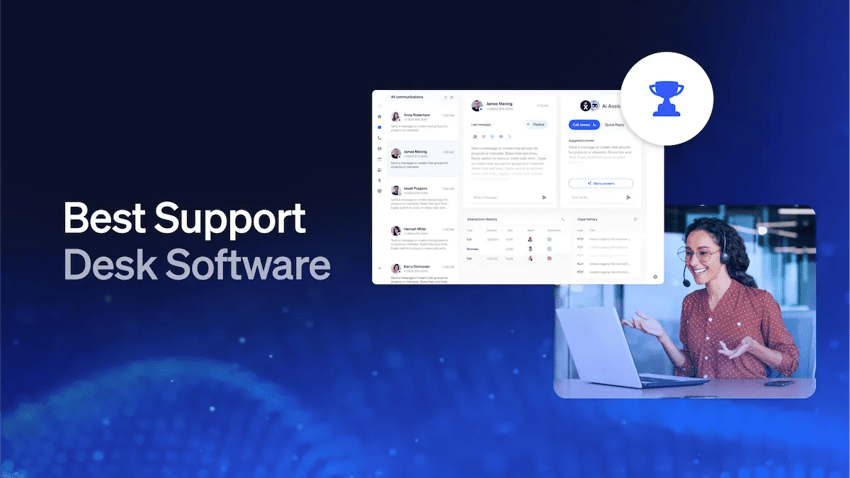“Please hold. Your call is very important to us. You’re next in the queue.”
Everyone has heard this message at some point — possibly with the smooth jazz that plays in the background. These are the few minutes on customer calls that erode brand loyalty as patience wanes and frustration builds.
In a survey of 1,100 customers, 60% say waiting even one minute on hold is too long. This means you need an alternative way to cater to customers trying to reach out when all agents are busy.
A callback service can be the answer, offering many strategic advantages beyond the CX improvement.
What Is a Callback Service?
A callback service lets customers register their request to talk to a company’s representative instead of having to wait on hold for someone to answer. In practice, the service captures the customer’s phone number and holds their place in the callback queue.
As soon as an agent is free, the system automatically dials the customer back. This gives customers the option to use their time as they please while they wait to speak to someone.
The callback service typically gets triggered when a caller in a queue requests a callback through an interactive voice response menu or a chatbot. In either case, the customer is free to hang up and go about their day, knowing they’ll receive a call from the company.
You’ll likely come across two types of callback services:
- Queue-based callbacks: When customers ask for a callback, the system dials in the order of the original call as soon as it’s the caller’s turn.
- Scheduled callbacks. The customer selects a convenient time slot to be called back, such as later that day or the following week, and the call appointment is scheduled. This is especially useful for busy professionals or callers in different time zones, as it allows them to choose when they want to talk.
Behind the scenes, automation powers the callback solution. The moment a customer requests a callback, the system logs their details and either places them in a virtual queue or schedules a time for the call. When the conditions are met, the system initiates an outbound call to the customer.

Contact center platforms integrate this process with the regular call routing and IVR logic. This ensures that a callback option can be implemented without the need for a separate infrastructure.
Why Callback Services Matter
Implementing a callback service improves the customer experience and contact center performance in several ways.
Minimizes hold times and improves customer experience
Nobody likes waiting on hold. The most frustrating aspect of customer service is the hold time when waiting for a customer support rep to answer. Modern customers like to be efficient, and keeping them waiting for long periods chews into their patience.
Instead of making your customers wait on hold, offering a callback as an alternative shows that you value their time. In fact, 74% of consumers prefer to use a callback option instead of waiting on hold for a customer service rep. This offers them the convenience they need when they’re already dealing with an issue.
According to Forrester analyst Max Ball, “An automatic callback is a big, loud way to tell customers you care.”
When a callback service is implemented, the numbers also speak favorably. Companies that have added a callback service saw up to 32% improvement in customer satisfaction score.
| Give your customers an option for a callback. Implement Nextiva’s advanced IVR, and show customers you care about their time. |

Reduces call abandonment rates
Call abandonment is when a customer hangs up before reaching an agent. Many callers will simply give up if they feel stuck waiting too long.
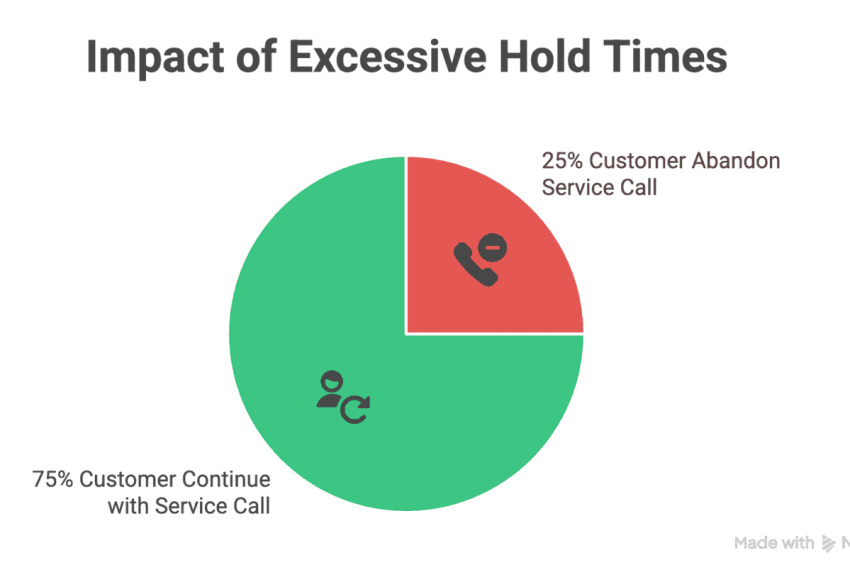
Rather than hanging up in frustration, the caller who might have left opts for a return call instead. This cuts the call abandonment rate.
Lower abandonment is critical because it means customers aren’t falling through the cracks. You’re able to assist more of the people who contact you in the first place, which not only improves customer satisfaction but also prevents those frustrated repeat call attempts later in the day.
Smooths out call volume spikes
Every contact center faces peak call volume periods. Callbacks flatten these spikes in call volume, so your agents aren’t overwhelmed all at once. If too many calls come in concurrently, a queue callback lets some callers get a return call a little later instead of clogging the lines right now.
Essentially, it’s a way to turn an unmanaged queue into a managed schedule. This is especially useful for events like product outages or Monday morning spikes, helping your team handle surges more systematically. This improves customer outcomes and keeps agents’ morale up.
Optimizes agent availability and performance
Who will be easier to deal with: a customer who spent the last 20 minutes listening to the hold music or one who scheduled a set time to talk to your agents? The latter is more likely, as the call would start on the right foot. In this case, agents would invest their abilities in helping the customer rather than justifying their wait.
When callers haven’t waited on hold, agents experience less strain and are better equipped to handle interactions more efficiently. This optimizes the case for their performance KPIs.
Moreover, callback scheduling ties with real-time availability to prevent agent overload. With a tuned system that offers callback on the basis of a set threshold for calls in queue or wait times, the center becomes better equipped to maximize agent availability.

Lowers operational costs
Reducing hold times saves your contact center money. When you have callers sitting in a telephony queue, you incur charges for every minute they wait, and those costs add up. By using a callback service, the line is freed, and you only incur the outbound call when an agent is ready, helping contact centers save on costs.

“Not every service issue requires high-touch engagement. The majority of these issues can be addressed through an AI chatbot or self-serve solution. These solutions allow you to increase efficiency. You get to scale up ops without linearly increasing the headcount on your customer support team.”
~ Ken McMahon
This makes automatic callbacks not just a benefit for the CX — they’re also a strategic advantage.
Key Features of an Effective Callback System
Not all callback implementations are equal. To truly deliver the benefits above, a callback system should have several key features and capabilities. Below are the critical components that make a callback service effective.
Intelligent queue callback
The callback system should be able to automatically capture the caller’s number and place them in a virtual queue for a return call. A good system will remember the order of requests so that being called back is truly an alternative to holding, not a reset of the caller’s position.

When an agent becomes available, the system dials the customer and bridges the call. This process should feel seamless. The customer is simply receiving the assistance they requested, just without having to wait on hold.
Scheduled callback time slots
For situations where the customer cannot or doesn’t want to receive a call as soon as an agent is free, scheduled customer callbacks are essential. These allow customers to choose a convenient time window for the return call, whether later the same day or on another day.
For instance, if a customer calls outside of your business hours, you can let them pick a callback for the next morning. Or, if someone is about to head into a meeting, they might schedule a callback in two hours when they’re free again. Offering this flexibility demonstrates that your company values its customers’ schedules, thereby increasing customer goodwill.
SMS confirmation and reminders
As soon as a customer requests a callback, the system sends a text message confirming the request, such as “You will be called in approximately 20 minutes.” This reassurance goes a long way, letting the customer know their request has been processed successfully and informing them of what to expect. Moreover, it helps reduce missed connections or unanswered calls.
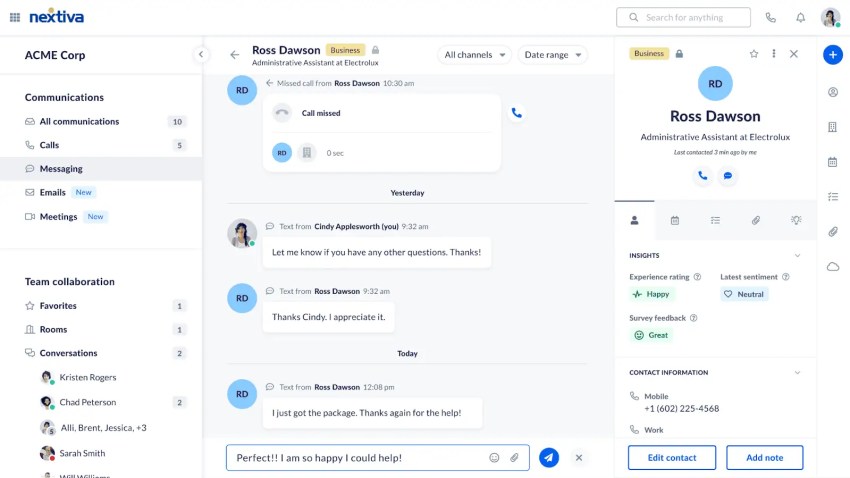
Cancel and reschedule options
Plans change, and a callback system should respect that. Your customers should feel empowered to cancel or reschedule their callback requests easily if needed. For example, if a customer solved their issue on their own or can’t talk at the time initially scheduled, you can provide a mechanism through an SMS reply, a web link, or the IVR for them to cancel the callback or choose a new time.
This prevents wasted effort. Agents don’t invest their time in assisting customers who may not need help any longer, but can’t cancel the request due to the unavailability of options.
CRM and telephony integration
Integrating the phone system with CRM and a telephony platform will enable agents to view the customer’s profile and previous customer interactions automatically. This is important because the agent who gives a callback may not be the same agent who had assisted the customer in the past. Furthermore, the IVR or chatbot might have collected some new information.
CRM and telephone integration ensure customers don’t repeat information that they have already conveyed. It also pitches in while delivering an omnichannel experience to your customers.
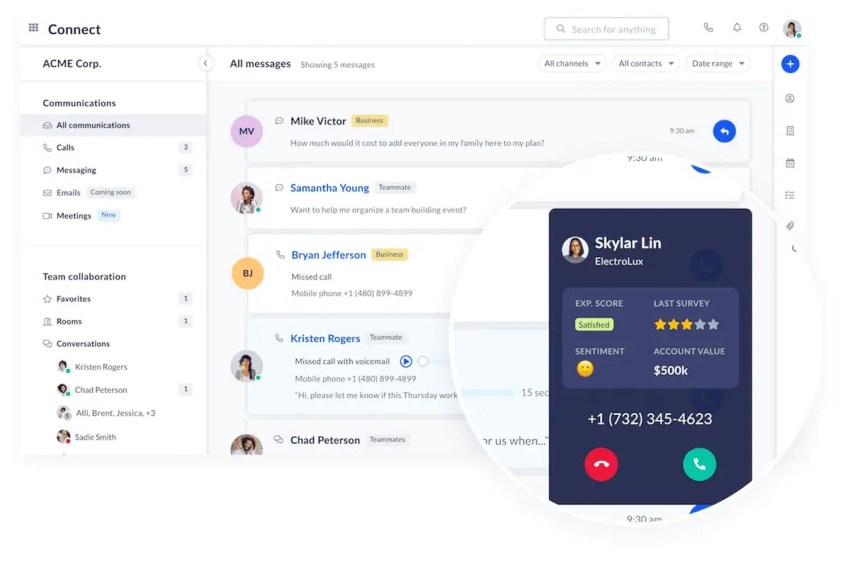
Callback analytics and metrics
How do you assess whether your callback system is working as expected? Many systems give you the analytics needed to do this assessment. The analytics help in answering questions like:
- How many callbacks are being requested and when?
- What is the average wait time before the callback occurs?
- What percentage of outbound return calls reach the customer?
- Are customers getting a callback within the promised time frame?
- What is the number of abandoned calls?
If you want to dig deeper, you can track CSAT or NPS scores post-callback and compare them with customers who waited on hold.
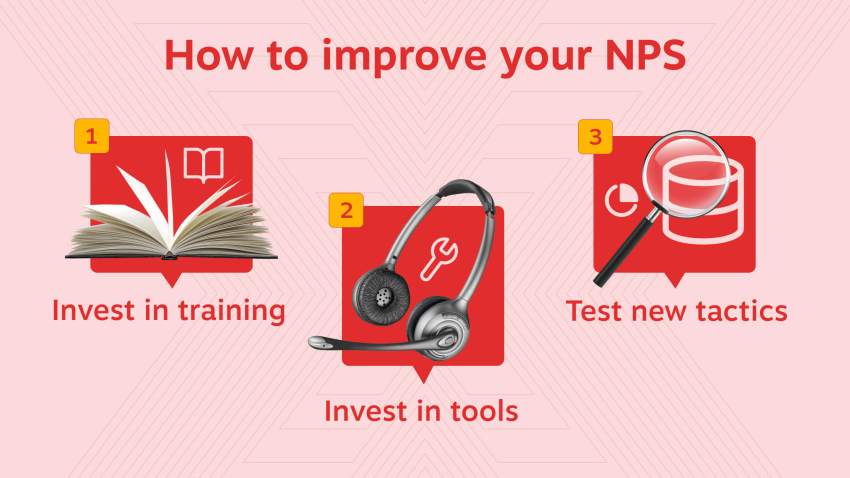
Callback Use Cases Across the Contact Center
Callback services are versatile and applicable in many scenarios within a contact center. Here are several everyday use cases for callbacks and the benefits they offer in each context:
- High-volume inbound support: When your support lines are flooded with incoming calls in a queue — for example, on Monday mornings — callbacks flatten the spike in volume. This reduces pressure on agents during peak times and ensures customers still get help without endless holds.
- After-hours call handling:. This helps contact centers that aren’t operating 24/7. Rather than leaving a voicemail or waiting until the lines open, customers request a callback to get in touch with a live agent. They’ll be first in line to get a return call when business hours resume. After-hours call handling enhances the customer experience for late callers and captures issues that might have been overlooked overnight.
- Billing and collections: For billing, finance, or collections calls, where customers may already be anxious, offering a callback shows extra courtesy. Callers dealing with payments or sensitive account issues don’t have to feel stressed while waiting on hold. Instead, they request a callback and discuss the matter when an agent is ready. This gives your agents a chance to review the account details before calling back, possibly improving the outcome of the conversation. A recent study by Bain & Company’s NPS Prism team found that letting customers choose a callback when contacting a bank’s call center can increase customer satisfaction by up to 28 points.
- Technical support escalations: Often in tech support, the first agent might need to consult a tier 2 expert or research the problem further. Instead of making the customer hold while that happens, a scheduled callback allows time for troubleshooting offline and connects the customer with the right expertise upon callback, offering a better experience.
- Global or distributed teams: If you serve customers across different time zones or have a follow-the-sun support model, callbacks help align with the customer’s local time.
- Chatbot and IVR follow-up: When customers initiate self-service channels and the issue remains unresolved, a callback seamlessly transitions them to a human agent. The omnichannel handoff saves the customer from having to re-explain everything.
Best Practices for Implementing Callback Services
There are different use cases and benefits that make a callback service valuable to a contact center. However, its effectiveness depends on how it’s configured and deployed.
In LinkedIn comments, Garrett Chase, Branch Manager at CIBC, expressed his frustration over a typical situation with a callback service. “Interestingly,” he says, “I was offered a callback, and I accepted only to receive an automated message or a notification that the callback queue was full and the call disconnected, leaving me frustrated.”
This happens when the callback system isn’t implemented correctly. To make the most of a callback service, you should follow these best practices:
*The above comment was edited for clarity.
Offer the callback option early
Don’t wait until a caller has been on hold for five or 10 minutes to offer a callback. Present the callback choice as soon as it’s clear that there may be a substantial hold time.
Many companies trigger the prompt once the estimated wait exceeds a certain threshold. However, the sooner you offer it, the more goodwill you earn.
Use call routing logic intelligently
Try to route the callback to the same agent or team that the customer was initially dealing with. This continuity improves CX, especially when the initial interaction requires the provision of some information. For example, suppose a customer calling about a billing issue receives a callback. In that case, it should ideally be handled by an agent in the billing department or even the exact agent they spoke with initially, if it was an arranged callback following a consultation.
Skill-based routing should take such callback requests into account. Wherever feasible, match callbacks to the appropriate agent or skill group based on the original inquiry. This makes the callback service feel like a natural extension of the initial contact and not a siloed event.
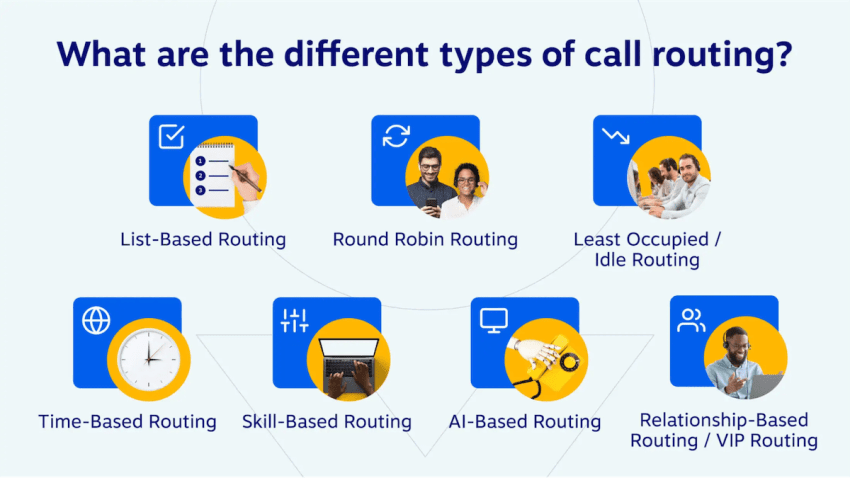
In events where callbacks reach their maximum limit, you can configure queuing and routing so that the system schedules the callback for the next queue and provides an ETA to the customer. This would prevent customer frustration while keeping them informed about what to expect next.
Integrate with omnichannel workflows
Don’t limit callbacks to just incoming phone calls. Modern customers initiate interactions on any channel, including web chat, messaging apps, email, and more. Your strategy should consider such cases. AI-powered contact center solutions help in managing such situations seamlessly, ensuring customers get a human conversation on their terms, regardless of the channel they use to convey their request.
This way, you combine the convenience of different channels with the personal touch of a human agent while creating a satisfactory experience.
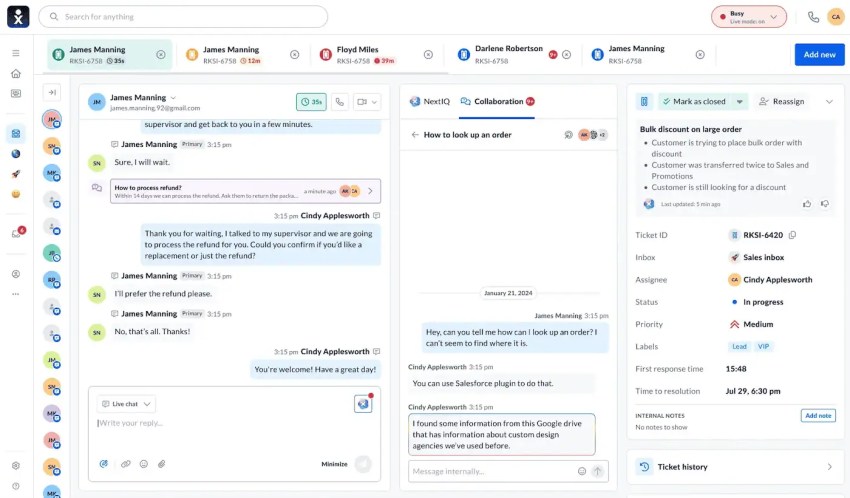
Automate where it makes sense
The usual practice is to have your IVR or a virtual assistant collect relevant information from the customer before or during the callback waiting period. Some advanced systems are configured to send follow-up texts to customers asking for more details. Once their responses are received, AI further analyzes the customer’s query for complete context.
This not only enables agents to provide a satisfactory response, but it also reduces the overall average handle time.
Smarter Callbacks With Nextiva
An intelligent callback service lets you meet customers on their terms and at a convenient time for them. Nextiva enables you to deploy such a service without a team of developers or months of lead time. The contact center platform gives you an easy way to activate automated queue and callback functions.
Nextiva’s system integrates with CRM data to give customers a more personalized and informed callback experience. Additionally, you get support for omnichannel interactions, encouraging your customers to request callbacks at their convenience.
Want to explore Nextiva’s callback feature and integrations?
Get a Nextiva demo, and give your customers the experience they won’t regret.
Top AI-Powered Contact Center Solution
Transform your customer interactions with a contact center platform that saves you time and money, reduces agent and supervisor stress, and flexibly adapts to fit your needs.

















 Customer Experience
Customer Experience 







